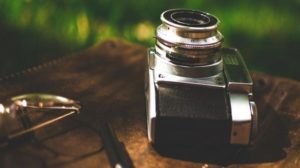What are the features of a T-CUP Camera?« Back to Questions List
|
T-CUP camera is described as the world’s fastest camera. It is claimed that a T-CUP can capture one trillion (one thousand billion) frames per second. Earlier record holder, a device from Sweden, had a speed of five hundred billion frames per frame. T-CUP stands for Trillion-frame-per-second Compressed Ultrafast Photography. The development of this high speed camera was announced by the scientists of the California Institute of Technology (Caltech) and L’Institut National de la Recherche Scientifique. Capturing of swift passing of light through a scattering medium like human tissue can redefine the researches in biomedical engineering and materal science. T-CUP imaging device has a huge potential in biomedical imaging. The present day imaging instruments do not have a comparable high speed to capture momentary events in real time. The data acquisition method that works behind T-CUP is termed Radon transformation. It uses a beam splitter to split a 3D spatiotemporal image to two copies. The first one is captured by a 2D imaging sensor to offer a continuous view. The second image is spatially encoded and temporally divided into multiple separate frames in a 3-D axis. These frames are then recorded with another 2D imaging sensor to form a time-sheared view. Then the T-CUP combines the two views into 2D projection using a single exposure. The image quality captured by using the presently available camera, say a femtosecond (one quadrillionth of a second) streak camera, is limited. A streak camera is an instrument used for measuring the variation in the intensity of a pulse of light with time. They are employed for measuring duration of some superfast laser light applications like LIDAR. To improve the image quality, the scientists added one more camera to capture a static image. This image combined with the image captured by a femtosecond streak camera, a Radon transformation can be created which can then be used to record high quality images while recording ten trillion frames per second.
T-CUP will be employed in a number of applications like investigation of space-time duality (a mechanism that supports the nature of light), improvement of technologies used in microscopy and diagnostic imaging. Camera in a spacecraft :Basics of functioningWhat is a Video Assistant Referee (VAR)?
|

